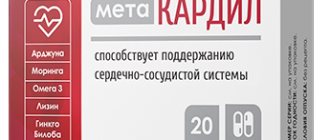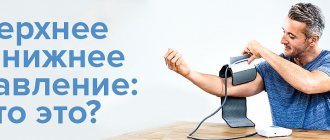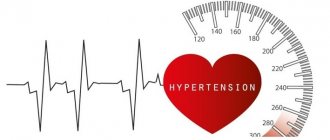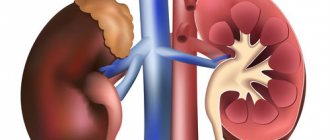Sign up
+7
Cardiologists note that more and more young people are turning to them with complaints of rapid heartbeat. Today, tachycardia has ceased to be a disease of older people, but affects those who are not only under 30, but also 20. We are talking about a type of arrhythmia that manifests itself as a rapid heartbeat.
It is interesting that in domestic cardiological practice a pulse of up to 75 beats per minute is considered normal, and an indicator of 85 beats per minute already indicates moderate tachycardia. However, according to European standards, the diagnosis of tachycardia is made when the pulse is up to 90 beats per minute, according to American standards - up to 100 beats or higher.
Make an appointment with a specialist without queues, at a convenient time
Sign up
+7
Reasons for the development of the disease
Tachycardia may have a physiological etiology, for example, if the heart begins to beat faster after jogging or other physical activity. And if it quickly restores its rhythm within a few minutes, then there is no reason to worry. Also, attacks of tachycardia, for which you may not rush to see a doctor, occur against a background of fear, fright or nervous overstrain.
Paroxysmal tachycardia appears when the functioning of the heart and blood vessels is disrupted. This is a reason to immediately undergo diagnostics and treatment in cardiology.
First aid for tachycardia
The normal heart rate (HR) for a healthy adult is 60–80 beats per minute. To calculate your heart rate, you need to place the index and middle fingers of one hand on the wrist of the other and count the pulse rate for 15 seconds, then multiply the resulting number by 4.
If the heartbeat exceeds 90 beats, tachycardia begins. However, not every attack requires calling a doctor. For example, physiological (natural) causes of increased heart rate go away on their own if the provoking factor is eliminated - reduce physical activity, stabilize the emotional state, quit smoking, etc.
Pathological variants of tachycardia begin for no apparent reason and are accompanied by symptoms of oxygen starvation, decreased blood pressure and a feeling of fear. This condition can stop on its own, but in some cases an attack of tachycardia occurs due to serious pathology (heart or respiratory failure, hypertensive crisis). And then the rhythm of the heart can only be adjusted in the hospital.
Disruption of the normal heart rate (HR) can lead to serious complications such as:
- heart attack;
- stroke;
- acute heart failure;
- thrombophlebitis;
- injuries resulting from fainting.
An attack of tachycardia for no apparent reason requires a visit to the doctor, even if the episode of increased heart rate goes away on its own
What to do during an attack of tachycardia
- 1
Take a horizontal position. This will take the load off the heart and blood vessels. - 2
Release the chest and neck - unfasten the buttons, loosen the collar, remove the tie. Tight clothing restricts breathing, so the pressure needs to be loosened. - 3
Place a pillow under your neck. Throwing back the head can cause circulatory problems, which is unacceptable in conditions of tachycardia. - 4
Provide fresh air flow. When the heart rate increases, the body experiences oxygen starvation, so an open window can alleviate the condition. - 5
Drink a glass of cold water in small sips. Hot drinks, coffee or strong tea are prohibited, and douse yourself with cold water. - 6
Cool your face - for example, place a towel soaked in cold water on your forehead and temple areas. - 7
Perform breathing exercises. A cycle of repeating slow, deep breaths, holding your breath for 5 to 8 seconds, and exhaling slowly can slow your heart rate. - 8
If signs of panic appear, you should take a sedative. - 9
If an attack of tachycardia does not occur for the first time, you should take antiarrhythmic drugs prescribed by your doctor.
For tachycardia at a young age, massage of the neck and back of the head is acceptable. This method is contraindicated for the elderly due to the high risk of heart attack and stroke.
When to call the doctor
If the tachycardia is caused by a serious heart pathology, the first aid measures described above may not be sufficient. If tachycardia does not go away within 15–20 minutes, especially while taking antiarrhythmic drugs, you should immediately call an ambulance.
Other reasons to call a doctor
- Heart rate is 120 beats per minute or higher.
- Intense pain behind the sternum, which is accompanied by pallor, sweating, fear of death and a burning sensation spreading to the left arm, lower jaw or abdomen.
- Tachycardia is accompanied by severe headache and a feeling of numbness in the limbs or half of the face.
- The attack occurred during pregnancy.
Degree of disease development
There are various forms of paroxysmal tachycardia, depending on the anomalies in which part of the heart it is caused:
- Ventricular tachycardia - this pathology develops when the patient has defects in the heart muscle. For example, we can talk about scar lesions, tissue sclerosis, atrophic and other disorders. Ventricular tachycardia often occurs after such serious cardiac problems as ischemic disease, myocardial infarction, congenital or acquired defects.
- Supraventricular tachycardia - occurs in most cases against the background of a pathological state of the elements of the patient’s sympathetic nervous system.
Tachycardia due to high blood pressure: what is dangerous and what to do?
With high blood pressure, tachycardia can be observed - an increase in heart rate of more than 90 beats per minute. Olga Kononova, a methodologist at the Regional Center for Medical Prevention, spoke about the causes and possible consequences of this condition.
Various factors can provoke tachycardia with high blood pressure. These include increased body temperature, stress, physical activity, dehydration, hormonal imbalance, adverse weather conditions, and heart disease.
The combination of high blood pressure and increased heart rate is extremely dangerous for your health. Due to the destruction of red blood cells and the activation of the blood clotting process, thromboembolism can develop: a blood clot can block an artery and cause the death of the patient.
Also, if tachycardia is observed frequently, the immune system is suppressed due to metabolic disorders. In addition, the consequences of tachycardia in combination with high blood pressure can be the development of coronary heart disease and heart attack, fainting and, as a result, injury.
The prolonged course of such conditions leads to cardiogenic shock with a sharp drop in blood pressure with further death and sudden cardiac arrest.
Alarming symptoms include: palpitations, blurred vision, pounding headaches, dizziness, chest pressure, and pain radiating to the arms, back, and stomach area. In addition, dangerous manifestations include heaviness in the legs, weakness, drowsiness, disturbances in general condition, fainting, shortness of breath, numbness of the limbs and fingers.
In a condition of tachycardia in combination with high blood pressure, self-administration of drugs to lower the heart rate is not recommended, as this can lead to various consequences.
If the pulse is at the level of 90 - 120 beats per minute, a doctor's consultation is required.
However, it is important to know: if the pulse is over 120 beats per minute, you must immediately call an ambulance, especially if this condition lasts for more than two hours!
Before the ambulance team arrives, it is important to exclude any motor activity, take a sitting position, try to relax and calm down. But it is impossible to take a lying position in this state, since the blood circulation will be uneven and the risk of developing pulmonary edema will increase.
Even and slow breathing for 10 minutes, holding your breath as you exhale (5 seconds for each element of the cycle) can help. This will help not only lower your heart rate, but also your blood pressure. You can also take one sedative tablet based on herbal ingredients - motherwort or valerian, but not in alcohol form.
Diagnostics
Only a cardiologist can determine how to treat cardiac tachycardia. It is useless to treat tachycardia itself as a symptom. The only effective way to combat heart palpitations is to eliminate its root cause.
- Available: doctor’s appointment from 1500 rubles
- Convenient: open daily from 8:00 to 21:00
- Quickly: we will carry out all the diagnostics at the first appointment
- Complete: has all the necessary equipment
But first of all, the root cause must be correctly identified. For this purpose, experienced cardiologists prescribe comprehensive diagnostics to medical patients. A set of laboratory and hardware examinations may include:
- Electrocardiogram is standard.
- Daily ECG monitoring according to Holter, 2-3 days monitoring).
- General and detailed blood tests.
- Analysis of urine.
- Blood test for thyroid hormones.
- Ultrasound diagnostics of the heart.
- Echocardiography.
Rapid heartbeat after eating
Tachycardia that appears after eating may indicate a number of health problems. Often these patients show changes in the functioning of the heart muscle or coronary arteries. Rapid heartbeat after eating is associated with a physiological feature because:
- a large amount of food presses on the walls of the diaphragm;
- the patient breathes more often;
- active work of the heart muscle is provoked.
If tachycardia occurs rarely and does not require medical attention, you can exclude it yourself. For this:
- eat meals in small portions;
- do not drink immediately after eating;
- minimize fatty, fried, sweet, carbonated drinks;
- Do not lie down or exercise immediately after eating.
Tachycardia after eating is often a symptom of neurosis. It also indicates the following problems: high position of the diaphragm, atherosclerosis, obesity, overeating, unhealthy lifestyle, VSD, angina pectoris. Particular attention should be paid to the examination of the cardiovascular system. Progression of angina and other diseases should be excluded.
Treatment of paroxysmal tachycardia
If the root cause is identified and eliminated, but attacks of tachycardia still occur, the patient is prescribed a course of antiarrhythmic drugs. However, in severe cases, medications are also powerless. Then doctors decide on the possibility of electroshock treatment of tachycardia. The essence of this method is to stop the heart and then start it again. As cardiological practice shows, after such a shock, the heart begins to beat in the normal rhythm in most cases. This treatment practice is carried out only in inpatient settings equipped with modern resuscitation equipment.
To prevent the development of an attack of tachycardia, cardiologists recommend the following to patients:
- Follow your routine - it is important to sleep at least 8 hours a day.
- Get rid of the habit of drinking several cups of strong coffee a day.
- Reconsider your attitude towards bad habits - smoking or alcohol abuse is unacceptable.
- Change your eating schedule - meals should be frequent and small, about 5-6 times a day. The emphasis in the diet should be on low-fat foods and fresh herbs and vegetables.
- If possible, it is necessary to protect your nervous system from stress, and your body from physical overload.
Prices for services
| Name | Time | Price | |
| Appointment with a cardiologist, treatment and diagnostic, primary, outpatient | 1500 | ||
| Treatment and diagnostic appointment with a cardiologist, repeated, outpatient | 1000 | ||
| Preventive, outpatient appointment with a cardiologist | 550 | ||
| ECHO-CG (cardiography, ultrasound of the heart) | 3250 | ||
| Combined examination (Holter ECG + ABPM) | 6050 | ||
| Comprehensive consultation with a cardiologist ECG with interpretation + Echo-kg | 3650 | ||
| Call a doctor to your home (Khimki, Starbeevo, Ivakino, Naberezhnye) | 15000 | ||
| Calling a doctor to your home (Skhodnya, Podrezkovo, Novopodrezkovo, Planernaya station, Firsanovka) | 15000 | ||
| Call a doctor to your home (Kurkino, Novogorsk) | 15000 | ||
| Call a doctor to your home (Left Bank, Moscow, within the Moscow Ring Road) | 15000 | ||
| Medical consultation | 3300 | ||
| Extract from outpatient card | 660 | ||
| Consultation (interpretation) with analyzes from third parties | 1300 | ||
| Consultation on treatment adjustments | 550 | ||
| Repeated reception of CMN | 1600 | ||
| Initial reception of CMN | 2000 | ||
| Express test for determining the level of Troponin in the blood. | 1900 | ||
| Expand all prices | |||
Tachycardia: causes and signs. How to treat?
Tachycardia, along with a heart attack, is considered the “heart” disease of our century. It can be primary if it is a manifestation of ischemia, heart defects and chronic lung diseases - bronchitis, bronchial asthma.
The rapid heart rate (more than 90 beats/minute), which characterizes this heart disease, can be a consequence of frequent stress, fear, anxiety, and even simple physical activity. In this case, tachycardia is considered secondary.
The type of tachycardia can be determined by echo monitoring , ECG, ultrasound of the heart and thyroid gland. If the test result is negative, tachycardia is secondary.
If there is a sharp increase in heart rate that lasts for 10-15 minutes, you must immediately take a sedative - valocordin, Corvalol with water or sugar, put glycine under the tongue, drink tincture of valerian, mint or lemon balm. It may also be helpful to place a damp cloth or cold cloth on your forehead or neck.
With anemia, tachycardia is also possible, since with low hemoglobin, the blood supply to the tissues decreases, and the heart begins to contract faster to compensate for the lack of oxygen in the tissues. For anemia, it is necessary to consume iron supplements and vitamin C.
How to quickly stop tachycardia? Tachycardia is considered a normal phenomenon in adolescents during a period of active growth, and is also not excluded at elevated body temperatures: 70-80 pulse beats per minute at temperatures up to 39 degrees is absolutely normal. At a temperature above 39 degrees, you need to take Coldrex or paracetamol to bring it down, since with an increased heartbeat the body quickly gets tired.
Secondary tachycardia can be pacified with a variety of herbal infusions. For its long-term treatment, you can prepare a decoction of lemon balm, mint and valerian, pour 2 tbsp. spoons of herbs 0.5 liters of boiling water for 5-10 minutes and take the infusion for 2-3 weeks.
To reduce the release of adrenaline, you can put half a tablet of mezapam or phenazepam under your tongue.
It is better to replace evening coffee or tea with soothing infusions of rosehip and motherwort, which lower blood pressure.
Doctors do not advise getting carried away with valerian: take no more than 1 tablet 3 times a day for 10 days. You don't need excessive sleepiness, do you? For people for whom sleeping at work is contraindicated, we can recommend 1 tablet of Grandaxin under the tongue 2 times a day.
Cardiovascular drugs such as mildronate, trental or teopeca, which stimulate blood flow, can cause tachycardia. Alcoholic drinks of any strength can also become tachycardia stimulants, along with unusual and spicy foods.
Your fiery engine cannot forever “take the rap” for your frivolous attitude towards health. Get a preventive examination from a cardiologist , take care of your heart, and it will serve you for many years.










